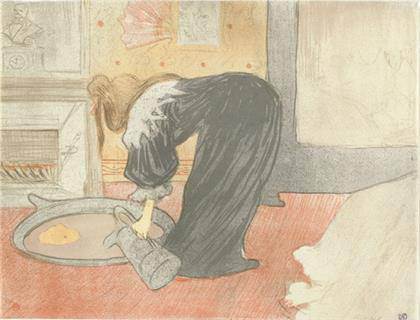
Onchi Koshiro
Objet No. 2, 1954.
The Art Institute of Chicago. Kate S. Buckingham Endowment.
Onchi Koshiro: The Abstract Prints – ARTIC Chicago ‘Onchi Koshiro: The Abstract Prints’, on view at the Art Institute of Chicago from July 19 through October 5, 2014 features the Museum’s large collection of rare Japanese prints.]]>
Source: Art Institute of Chicago
Japanese printmaker Onchi Koshiro (1892–1955) helped to revolutionize Japanese printmakingbefore and after World War II as a leader of the sosaku hanga – creative print – movement.Abandoning the tradition of specialists handling different steps in the printmaking process, Onchiand his peers chose to conceive, carve and print their own works.
Heavily influenced by the work of Western artists WassilyKandinsky and Edvard Munch, Onchi said printmaking was thebest way to create abstract art because it was the mostremoved from the artist’s hand or brush and needed precisionand forethought in construction and composition. He createdhis work using a variety of materials, including wood, wax paper,cardboard, string and other found items, as his blocks fromwhich to print. He was not interested in the idea of multiplesand often produced just a few editions of his abstract worksbefore destroying the printing blocks.
Very little of Onchi’s work is in private hands, and the Art Institute of Chicago is one of the fewmuseums with significant holdings of his prints. Illinois native Oliver Statler, an army employee inJapan during the Occupation, was a close friend of Onchi’s and a proponent of the sosaku hangamovement. He gave a large portion of his personal collection to the Art Institute in the 1960s andwas the intermediary in sales of Onchi’s works to Chicago collectors, including Mr. and Mrs. AlbertL. Arenberg. The Arenbergs purchased a large number of Onchi’s abstract works and later gavetheir collection to the museum. Many of the works in this exhibition are from the Arenbergcollection.
Related content
Magritte: Mystery of the Ordinary – Art Institute Chicago (exhibition, 2014)
Follow us on:


